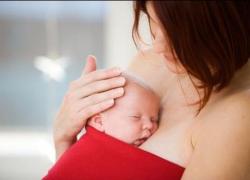 Transition of Consciousness at Birth
Transition of Consciousness at Birth
The Comparative Neurology Research Group published studies in the Journal of Perinatology with Stanford Medical School related to birth events in infants and the transition of in utero physiology. In their paper entitled “Skin-to-skin contact after birth and the natural course of neurosteroid levels in healthy term newborns” they found differences in neurosteroids levels at 24 hours post birth in infants born by Caesarian section vs normal vaginal delivery. Further work on the effect of neurosteroids on neurodevelopment are in progress. This work originated from the foal model of neonatal maladjustment syndrome.
Our recent veterinary observations in birthing horses have described neuroactive steroids as the cause of a neurological syndrome in newborn horses. In neonatal equine maladjustment syndrome (NEMS), behavioral abnormalities include altered states of consciousness, failure to bond with the mother, failure to nurse, wandering, lack of normal environmental responses and disorientation (see video at https://vimeo.com/190318093/06efdc9bfe ). NEMS can be ameliorated using a ‘thoracic squeeze technique’ (see video at https://vimeo.com/68410389 ), which is analogous to a ‘maternal embrace’ in humans.
We hypothesized that skin to skin care contact after birth may affect the natural course of neurosteroid levels in human neonates. We engaged neonatal doctors at Stanford and the following study was performed. We are searching for a marker that determines if the infant has had enough skin to skin care to achieve all the benefits.
Skin to skin kangaroo mother care improves premature infant survival and neurodevelopment.
Skin-to-skin contact after birth and the natural course of neurosteroid levels in healthy term newborns
Journal of Perinatology (2017) 37, 591–595; doi:10.1038/jp.2016.268; published online 19 January 2017
K R McCallie1, N W Gaikwad2, M E Castillo Cuadrado1, M Aleman3, J E Madigan3, D K Stevenson1 and V K Bhutani1
- Division of Neonatology, Stanford University, Palo Alto, CA, USA
- Department of Nutrition and Environmental Toxicology, University of California Davis, Davis, CA, USA
- Department of Veterinary Medicine, University of California Davis, Davis, CA, USA
Objective:
To determine the postnatal course of neurosteroid levels in relation to gender, mode of delivery and the extent of skin-to-skin (STS) contact during the first days of life in healthy term newborns.
Study Design:
Prospective observational study of 39 neonates in which parents recorded total duration of STS in the first 2 days and nine neurosteroids (dehydroepiandrosterone-sulfate, progesterone, pregnenolone, pregnenolone-sulfate, allopregnanolone, isopregnanolone, epipregnanolone, pregnanolone and pregnanolone-sulfate) were assayed from blood samples at birth and at 1–2 days of age.
Results:
All nine neurosteroid levels declined significantly during the first 2 days of life. Gender did not significantly affect the change in neurosteroid levels. The decline in neurosteroid levels was generally more pronounced in vaginal deliveries, and there was a trend toward a larger decline with more exposure to STS.
Conclusions:
Ongoing studies may better characterize the role of neurosteroids and the influence of STS in more critically ill and premature neonates.
